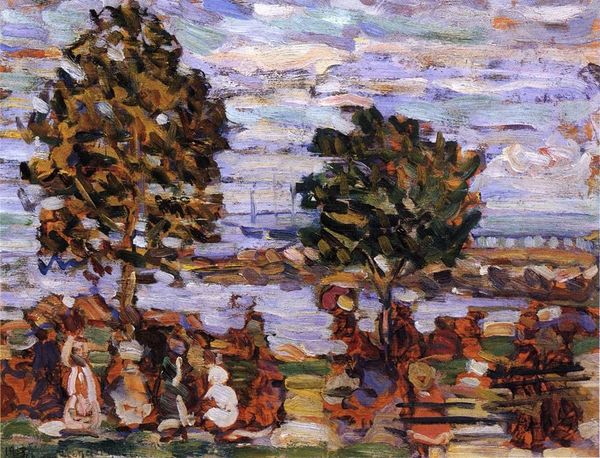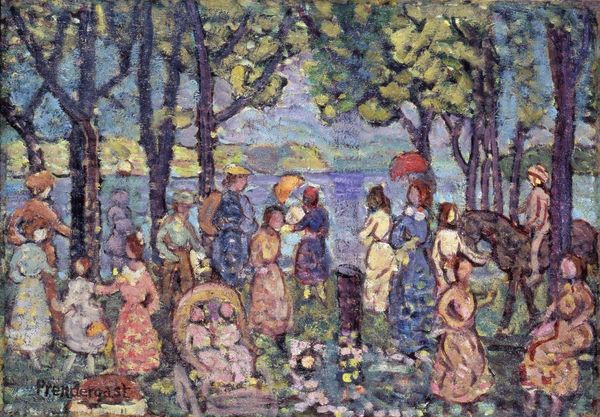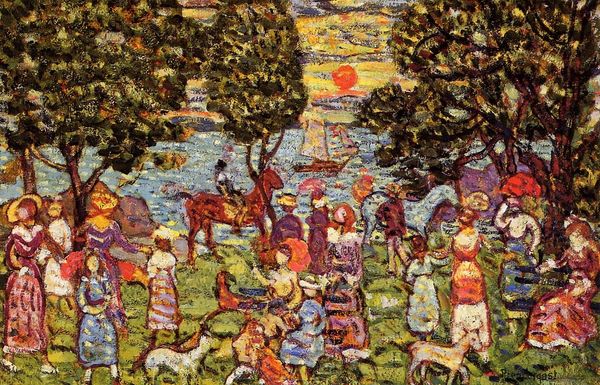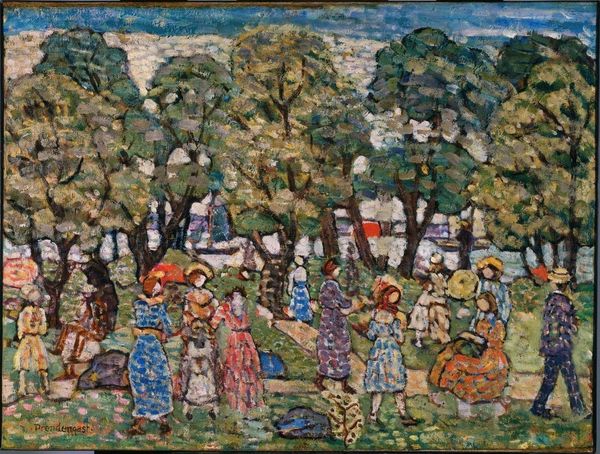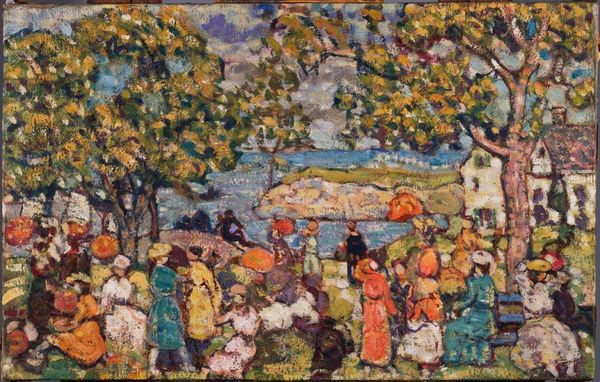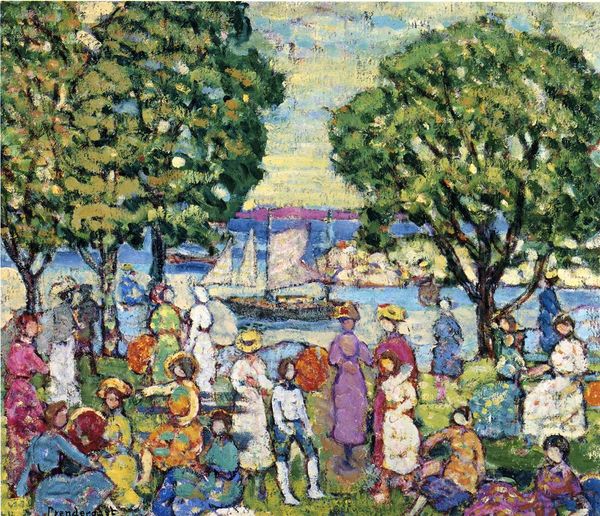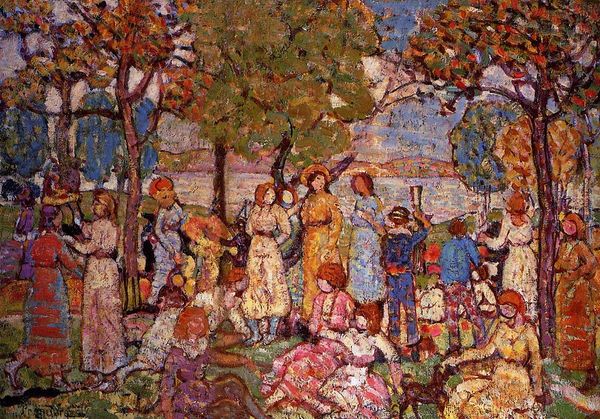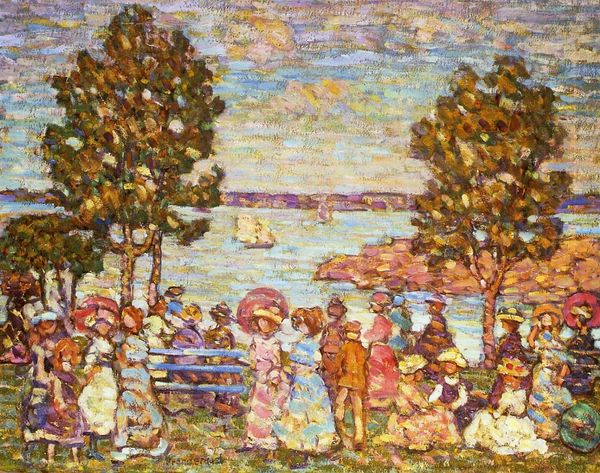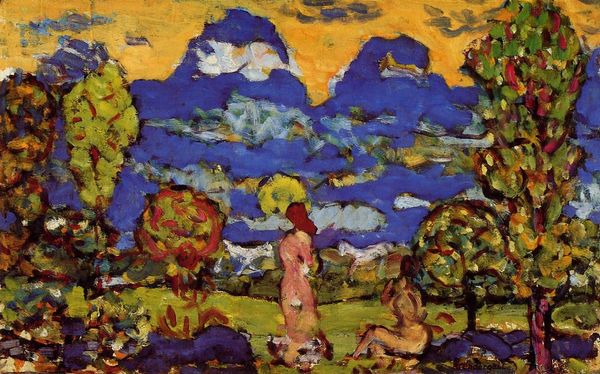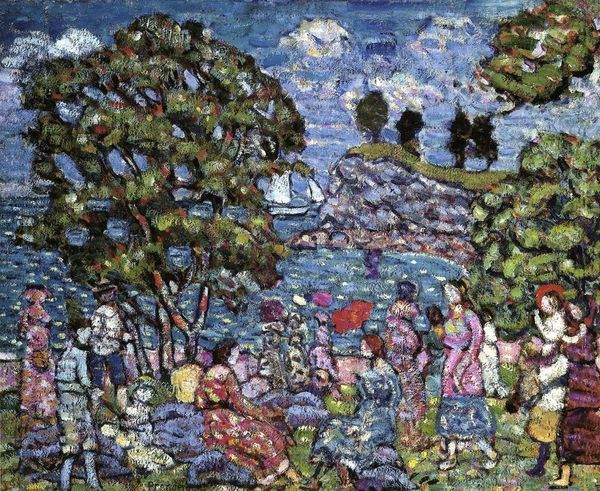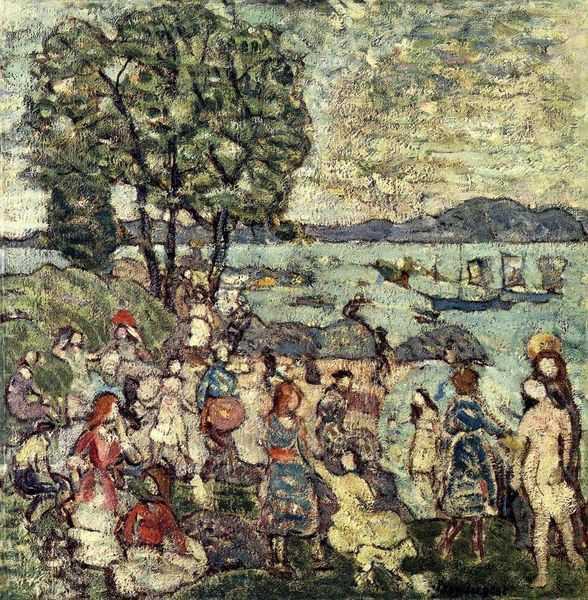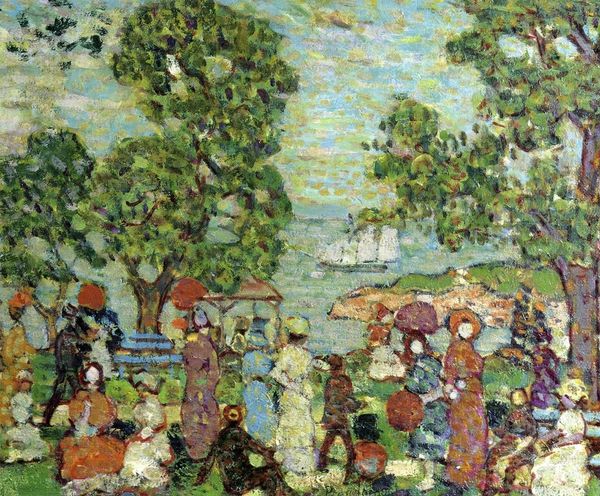
Dimensions: 45.72 x 70.49 cm
Copyright: Public domain
Editor: So, here we have Maurice Prendergast’s "The Park at Sunset," painted in 1913. It's so… vibrant, even though the colours are muted. There’s a sense of movement, almost like the scene is buzzing with quiet energy. How do you interpret this work, considering the time it was created? Curator: Well, given its 1913 date, Prendergast’s "The Park at Sunset" operates within a crucial intersection of artistic and social modernities. This piece isn't just an Impressionist landscape; it's a tableau reflecting emergent roles for women and leisure in public spaces. Editor: Could you expand on that a little? Curator: Certainly. Look at the groups of figures. Prendergast positions women prominently, enjoying the park. This reflects the burgeoning feminist movements, affording women visibility beyond the domestic sphere. How do the subjects' dresses play into that representation? Editor: The dresses…they’re all different, and the figures seem unconcerned with drawing attention to themselves or conforming to a single style. They aren't idealized, in a way reflecting growing individualism? Curator: Exactly. Furthermore, "The Park at Sunset" exists during a time of immense social upheaval, economic change, immigration. How might the park function as an access point in society at that time? Editor: I never really considered that aspect of it. So much more than just painting people. It almost makes you question their places in a historical context. Curator: Absolutely. It prompts a dialogue between visuality and historical understanding. Hopefully the dialogue around how such a space serves communities evolving, especially for marginalised populations, continues onwards.
Comments
No comments
Be the first to comment and join the conversation on the ultimate creative platform.

